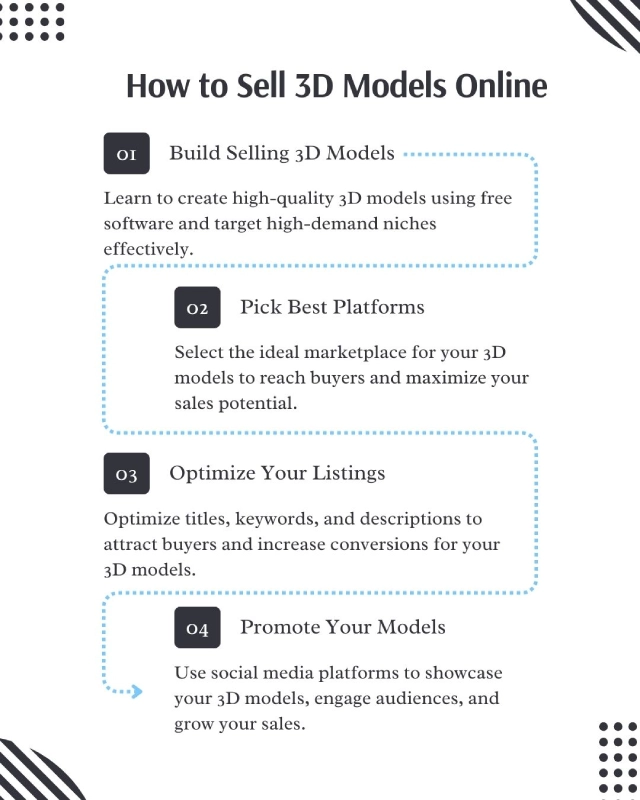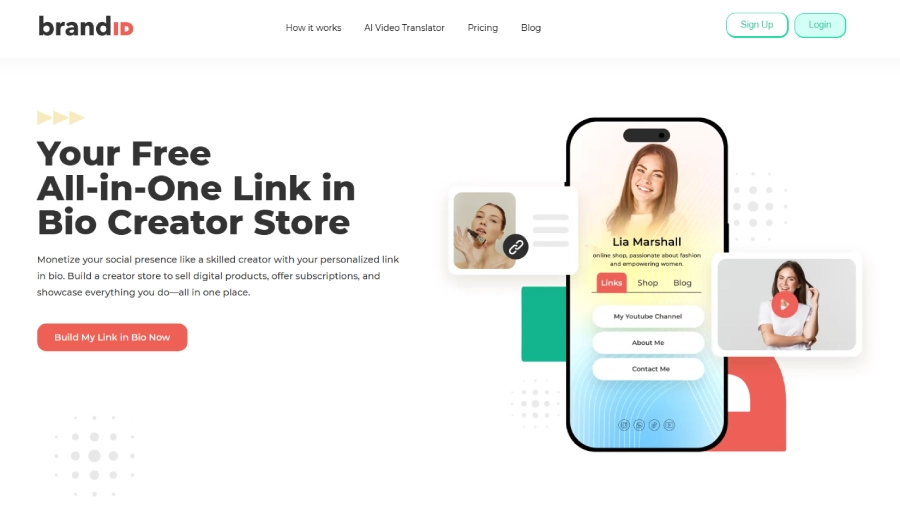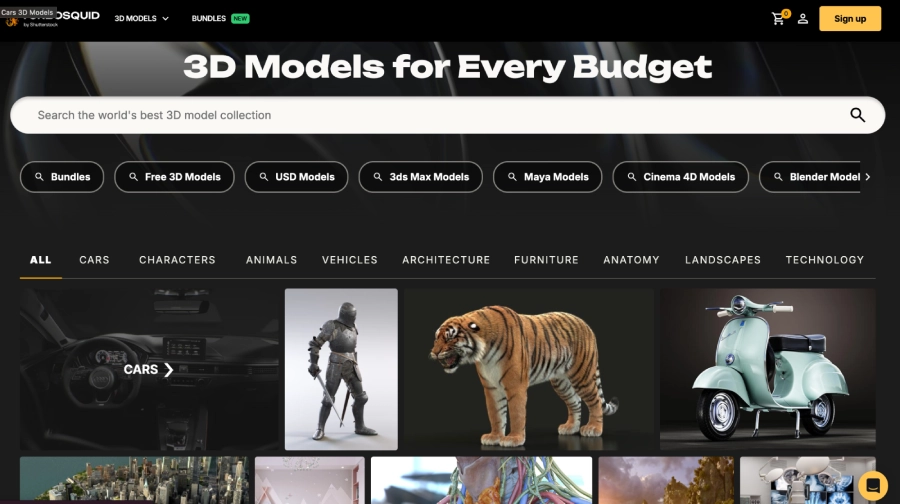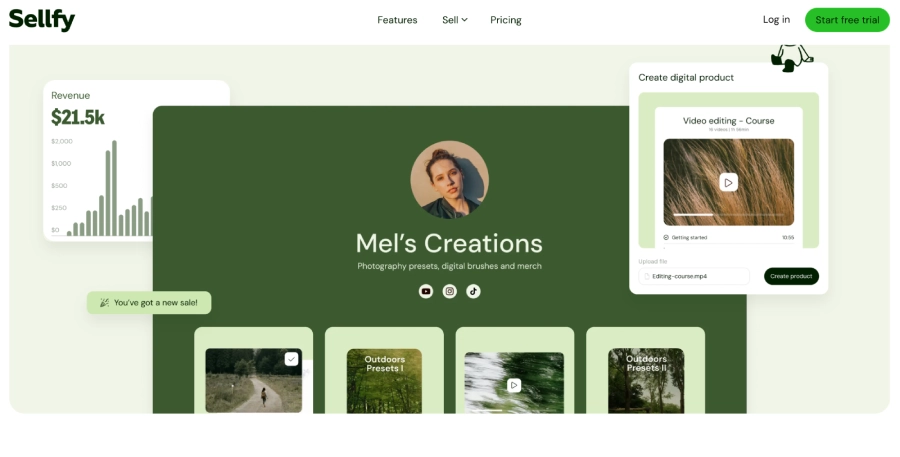Stop letting your 3D models collect dust; turn them into real income in 2025.
You might be surprised, but your 3D models aren’t just files, they could be your next paycheck if you learn to sell digital products. You can build a lucrative business using your talent and skills. Believe it or not, your creations have real value, and with the right approach, you can turn your digital files into passive, recurring income. Astonishing, right? But how do you sell your 3D models?
That’s exactly where brandID comes in. It’s a well-designed, all-in-one platform that allows creators like you to sell 3D models directly to your audience, bundle products, and set up subscription plans, all without losing money.
In this guide on how to sell 3D models, we’ll walk you through the best platforms and tactics that can actually turn your designs into profit.
How to Sell 3D Models Online
Selling 3D models online isn’t just about making a little side income; it’s about turning your creativity and innovation into genuine financial freedom. The challenge is that many creators don’t know where to begin, or worse, they grind away day and night without a clear strategy. Below, I’ll walk you through a step-by-step guide on how to sell 3D models to help you get started the right way.

- Create High-Quality Models That Sell: You can start with free software like Blender Studio for modeling and focus on high-demand niches such as gaming assets, furniture, or metaverse items.
- Choose the Right Platforms: When it comes to choosing the best platform to sell 3D models online, you’ll want to carefully consider your goals and the type of buyers you’re aiming to reach. Generally speaking, marketplaces are a great choice for exposure and quick wins, but they take a commission on every sale.
- Optimize Your Listings: When it comes to selling 3D models, writing clear and accurate titles, choosing the right keywords, and adding detailed product descriptions are absolutely crucial. By sparking your prospects’ interest, you can quickly turn them into paying customers.
- Marketing and Promoting Your Models: You can easily leverage the power of social media to promote your 3D models. Start by creating accounts on different platforms, staying active, and sharing valuable content to grow your followers and reach your target audience.
To take things a step further, build an email list so you can nurture long-term relationships with your audience, or team up with niche influencers to tap into ready-made communities. Done right, these strategies can give your work the visibility it deserves and help you sell 3D models, turning casual browsers into loyal buyers.
Best Platforms to Sell 3D Models
If you want to know where to sell 3D models online, you need to choose your platform wisely. Let’s break down the most popular options.
- brandID
- CGTrader
- TurboSquid
- Sellfy
1. brandID
I can say without hesitation that brandID is by far the best choice for creators who want full control, higher profits, and a fully branded storefront.

Unlike most competitors, brandID doesn’t take hefty fees—it lets you sell directly to your audience, set your own prices, and even monetize through subscriptions, bundles, or tips. It’s an ideal platform for 3D artists looking to build a long-term business rather than relying solely on marketplaces.
brandID Pros
- Easy monetization,
- Deep audience connection,
- Scalability,
- Direct fan support,
- Different revenue streams.
brandID Cons
- Not ideal for physical product sellers
2. CGTrader
With millions of buyers, CGTrader is one of the largest online marketplaces for 3D models. It gives creators broad exposure and supports a wide range of assets—from game-ready models to architectural renders.

CGTrader Pros
- Large marketplace with millions of buyers (good exposure).
- Flexible licensing options for different buyers.
CGTrader Cons
- Fees can reach up to 40%, cutting into your profits.
- Less control over customer relationships since the platform owns the audience.
- Limited branding and customization for your storefront.
- Strict approval process for new uploads.
3. TurboSquid
TurboSquid is one of the oldest 3D marketplaces and is trusted by countless professional studios. It serves a diverse range of buyers, from independent studios to large brands. If you’re looking to sell 3D models to clients with high expectations, TurboSquid is a solid choice, as maintaining strict quality standards is essential for its audience.

TurboSquid Pros
- Quality certification (CheckMate) boosts credibility.
- Integration with Shutterstock for additional exposure.
- Offers exclusive programs for top sellers.
TurboSquid Cons
- Very high commission fees (sometimes up to 60%).
- Strict quality requirements and the approval process slow down uploads.
- Very competitive with thousands of similar models.
- Limited ability to control pricing and promotions.
- Customer data is not shared with creators.
4. Sellfy
Selfy is another creator-friendly platform that lets you sell 3D models directly to your audience with lower fees compared to traditional marketplaces. While it doesn’t provide built-in traffic like CGTrader or TurboSquid, it offers more flexibility and control, making it an excellent middle ground for creators who want to sell online without a complicated setup.

Selfy Pros
- Easy to use with quick setup for digital products.
- Supports upselling, discount codes, and bundles.
- Good for building a direct brand presence
Sellfy Cons
- No built-in audience, requiring creators to drive their own traffic to make sales.
- Heavy reliance on self-marketing can be challenging for creators without a strong online presence.
- Lack of specialized tools, such as 3D model previews or advanced categorization, tailored for 3D asset sales.
- Limited customization options for stores and pages,
- Requires paid subscriptions (starting at $29/month for digital product sales).
Why brandID Is the Ultimate Solution for Selling 3D Models
So far, we’ve explored the top platforms to sell your 3D models, from CGTrader to Sellfy. While they offer exposure, these platforms often cut into your profits with high fees, strict rules, and limited control.
That’s where brandID stands out. It provides a smarter alternative, completely free, with only 5% commissions and full ownership, allowing 3D model designers to build branded stores, set their own prices, and connect directly with their audience. Here’s a look at the brandID features that set it apart from competitors and give it a clear edge:
- Maximum Profits
Unlike platforms such as CGTrader, which takes nearly 40%, or TurboSquid, which charges up to 60% in commission, brandID only keeps 5% per transaction. In other words, you keep most of your earnings while gaining the confidence that your creativity can lead to substantial earnings.
By choosing brandID, creators get the reassurance that they can actually receive more earnings per sale rather than losing them to excessive fees.
- Diverse Monetization Options
Instead of relying only on one-time sales, you can create a steady income through Subscriptions, offering fans tiered access to exclusive updates or special content. At the same time, the brandID Tipping feature allows your supporters to reward you for previews or early access.
On top of that, you can sell ebooks, audios, songs, and videos, which complement your 3D bundles and help you reach niche audiences, such as game developers.
- Enhanced Customization
brandID provides more design flexibility, allowing you to create a landing page that truly reflects your brand’s identity. Whether it’s custom fonts, colors, or layouts, brandID gives you the tools to stand out.
- Rent Out Billboards
Isn’t it fascinating that you can earn a solid income just by renting out ad space? With brandID’s innovative feature, creators can generate passive revenue by promoting products directly to their audiences, turning every profile into an additional income stream.
Conclusion
In conclusion, if you’re a 3D artist, one of the most practical ways to earn money is by turning your creativity into cash through creating and selling 3D models. Choosing the right platform, however, can make all the difference. While traditional marketplaces offer built-in traffic, they often charge high fees that cut into your revenue and profits.
That’s why brandID stands out among competitors. It’s completely free, with only 5% commissions (aside from standard PayPal and Stripe fees, which are independent of brandID). Mobile-friendly and packed with unlimited customization options, brandID also provides powerful tools like subscriptions, tipping, and bundled digital sales to help you maximize your earnings.
Ready to unlock your full potential? Sign up at brandID today and start turning your 3D masterpieces into unstoppable revenue.
FAQ
The best place to sell 3D models depends on your goals for profitability, control, and audience reach. Among popular platforms, brandID stands out as the best option for creators seeking full control, higher profits with zero commission fees, and a fully branded storefront. It allows setting your own prices, monetizing through subscriptions, bundles, or tips, and building a long-term business.
Yes, selling 3D models can be profitable. Many creators make substantial income by turning their digital creations into steady revenue streams.
To create 3D models for selling, you can use versatile software like Blender, which is free and suitable for beginners and professionals alike.
For more advanced and industry-standard tools, Autodesk Maya offers powerful modeling and animation features, while ZBrush excels in detailed digital sculpting. Choosing the right software depends on your skill level, project needs, and budget.
To sell 3D models in the metaverse, you first need to create assets that are compatible with popular metaverse platforms such as Decentraland, The Sandbox, or Roblox. These platforms often require specific file formats and optimized low-poly models for real-time use.
After creating your models, you can list them on metaverse-specific marketplaces or integrate them into virtual worlds as NFTs (non-fungible tokens) using blockchain technology.


